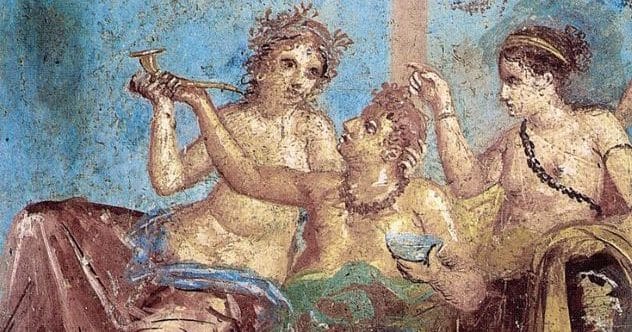Ever stood before a painting so vast it filled an entire wall, telling stories centuries old? That’s the magic of frescoes! These incredible artworks aren’t just painted on walls; they’re part of them. Artists long ago mixed pigments with fresh plaster, creating images that have wowed people for generations. From grand chapels to ancient ruins, these masterpieces offer a peek into the past. Ready to add some artistic wonder to your travel plans? Let’s explore 10 famous frescoes that are totally worth the journey!
10 Behold, 2017 by Ali Cavanaugh: A Modern Touch
While grand frescoes like those from the Renaissance are rare today, new artists keep the spirit alive. American artist Ali Cavanaugh creates what many call “modern frescoes.” Her stunning watercolor paintings have a dreamy, almost glowing quality.
Cavanaugh paints on wet kaolin clay panels. She uses see-through watercolor pigments and special brushes on white backgrounds. This technique makes her art look like it’s lit from behind! You can find her beautiful work in art shows, and also as prints or in books. It’s a fresh take on an ancient art form.
9 The Dazzling Paintings of Sigiriya, Sri Lanka
Imagine a giant rock fortress in Sri Lanka, adorned with ancient art! That’s Sigiriya, a must-see for history buffs. Around 477-495 AD, King Kasyapa built his kingdom here. First, he painted the huge 200-meter rock white. But then, he decided to decorate its western side with vibrant frescoes of 500 women, not religious figures.
Creating these artworks was a huge task, using a special technique called fresco lustro. Painters worked high up on bamboo scaffolds. Today, only about 20 of these beautiful paintings remain. But they’re in amazing shape, even after facing sun and rain for over 1,600 years! They offer a stunning glimpse into a long-lost kingdom.
8 Leonardo da Vinci’s Iconic “The Last Supper”
Leonardo da Vinci, a true Renaissance genius, painted “The Last Supper” around 1498. You can find this enormous fresco, nearly 9 meters wide, in Milan, Italy. It shows the famous biblical scene of Jesus sharing his last meal with his disciples and revealing his betrayer.
Interestingly, some details might not be exactly as they happened. Historians think the disciples were younger, and they likely reclined, not sat upright. Da Vinci might have changed this so everyone was visible. Sadly, this masterpiece hasn’t aged perfectly. He painted it on a stone wall and used a technique that trapped moisture, leading to many repair efforts over the centuries.
7 A Crusades Survivor: The Gethsemane Fresco
If you’re visiting the Israel Museum in Jerusalem, don’t miss a truly special find: a 12th-century fresco from Gethsemane. Discovered in 1999, this nearly 9-meter long artwork survived the turbulent times of the Crusades. It was once part of an abbey that wasn’t destroyed.
It was the largest fresco found in an archaeological dig in Israel at the time, and restoring it was a big challenge. The painting seems to show Mary and John the Baptist asking Jesus for forgiveness for humanity. Only the lower parts of the figures are clear. There’s also a Latin quote from Saint Augustine, possibly a message for guests dining at the monastery.
6 Giorgio Vasari’s “The Last Judgement” in Florence
Step into the Cathedral of Santa Maria Del Fiore in Florence, Italy, and look up! You’ll see the awe-inspiring fresco, “The Last Judgement.” Giorgio Vasari began this huge arched painting in 1572. After Vasari passed away, Federico Zuccaro completed it a few years later.
Vasari admired Michelangelo, and you can see that influence in this powerful work. It was designed to make churchgoers feel both awe and a little fear. It shows twenty-four elders looking down on angels, saints, and symbols of virtues. Closest to viewers below is a dramatic scene of hell. It’s a truly captivating piece of Renaissance art.
5 Ancient Wonders: The Frescoes of Akrotiri, Greece
Travel back in time with the frescoes of Akrotiri in Greece. Early Greek wall paintings were often simple, just red and black. But the Minoans, an ancient civilization, were among the first to paint colorful nature scenes directly onto walls, without any people in them. Many of these artworks were buried by a volcanic eruption on the island of Santorini (Thera).
These treasures were rediscovered in the 19th century during mining work. Today, you can see these amazing frescoes, like lively nature scenes and the famous Akrotiri boxers, at the National Archaeological Museum in Athens. They offer a fascinating look into life thousands of years ago.
4 Mesopotamia’s Majesty: The Investiture of Zimri-Lim
One of the oldest and most prized frescoes in the world is “The Investiture of Zimri-Lim.” Dating back to around 18 BC, this ancient artwork once decorated a wall in the royal palace of Mari, in what is now Syria. It shows a grand ceremony where King Zimri-Lim is being made king, a ritual connected to the goddess Ishtar.
Archaeologists discovered this amazing piece in 1936, but sadly, it was damaged by fire. We don’t know who painted it. Today, the Louvre Museum in Paris carefully looks after and restores this precious link to the ancient Mesopotamian world. It’s a rare window into very early civilizations.
3 Journey to Prehistory: African Rock Art
For a truly ancient art experience, consider a “rock art safari” in Southern Africa. The San People created these amazing paintings and carvings on rocks and cave walls. Some are over 3,000 years old, and art in Blombos Cave might even be 70,000 years old! South Africa boasts some of the best-preserved examples.
These artworks mostly show people and animals. Why did they make them? Perhaps to express themselves, leave messages, or keep records. Whatever the reason, they’re like early frescoes, telling stories from deep in the past. The Ukhahlamba-Drakensberg National Park, a UNESCO site, is home to thousands of these images, painted with natural materials like plant sap and animal blood.
2 Frozen in Time: The Frescoes of Pompeii
Imagine an entire city, perfectly preserved under volcanic ash for centuries! That’s Pompeii, near Naples in Italy. In AD 79, Mount Vesuvius erupted, burying the city and its amazing frescoes. When unearthed in the 1700s, these vibrant wall paintings offered an incredible look into Roman life.
You can see all sorts of scenes: myths, everyday life, portraits, and more. One famous piece is “Woman with Wax Tablets and Stylus.” Pompeii also had a more risqué side, with explicit paintings found in brothels and even private homes, like a depiction of Leda and the swan. Even the famous painter Renoir was amazed by their skill when he visited. Walking through Pompeii is like stepping straight into history.
1 Michelangelo’s Masterpiece: “The Creation of Adam”
Perhaps the most famous fresco of all is Michelangelo’s “The Creation of Adam.” Painted around 1512 on the ceiling of the Sistine Chapel in Vatican City, this iconic artwork is recognized worldwide. It beautifully illustrates the biblical story of God creating the first man, Adam, from the Book of Genesis.
Michelangelo’s style makes the figures look almost like sculptures. The fresco shows God, depicted as a powerful older man, reaching out to Adam, who is relaxed and at ease. Scholars still discuss the meaning of other figures in the scene, like the woman and child near God. The central image of their almost-touching fingers, symbolizing God giving life, is one of the most reproduced images in art history. It’s a breathtaking piece you have to see to believe.
Frescoes are more than just old paintings; they’re vibrant windows into different times and cultures. From the modern strokes of Ali Cavanaugh to the ancient mysteries of Sigiriya and Pompeii, each one tells a unique story. Michelangelo’s Adam still reaches out, da Vinci’s Supper invites contemplation, and African rock art whispers tales from millennia ago. Adding these masterpieces to your travel list isn’t just about seeing art; it’s about connecting with history and human creativity in a truly powerful way. These enduring artworks continue to inspire awe and wonder, reminding us of the lasting power of a story told on a wall.
Which of these incredible frescoes is now at the top of your travel dream list? Or is there another masterpiece you think everyone should see? Share your thoughts and favorite art destinations in the comments below!










